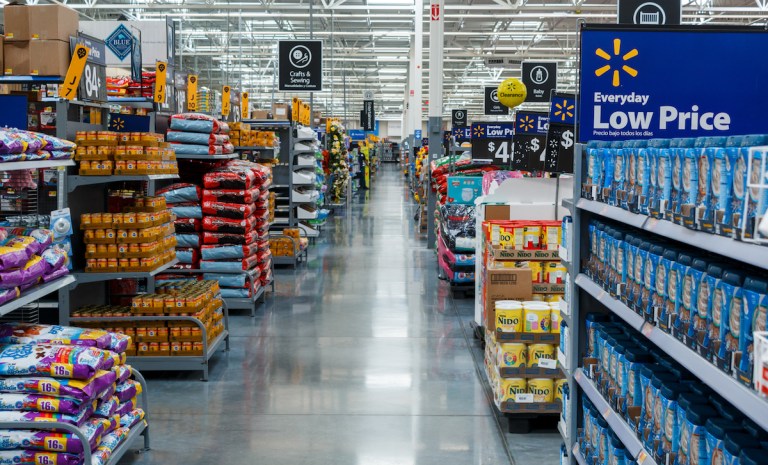Walmart and Amazon Expand Private-Label Plays to Compete in Grocery

As Amazon looks to close the gap with Walmart in grocery, both retail giants are seeing the opportunity to win over shoppers with their private-label brands.
Walmart announced Tuesday (April 30) the launch of bettergoods, its largest private-brand food rollout in two decades, promising low-priced, “chef-inspired” items ranging from chicken wings to nut butter.
“Today’s customers expect more from the private brands they purchase — they want affordable, quality products to elevate their overall food experience,” Scott Morris, Walmart’s senior vice president for private brands, food and consumables, said in a statement.
Amazon, too, appears to be optimistic about private-label groceries even while it has pared down its brands in other categories. Last year, Amazon made headlines when it decided to scale back dozens of its company’s private-label brands, having eliminated all but three of what had been 30 clothing brands and phasing out two of its three furniture brands. Yet even as it was doing this, it was expanding Whole Foods’ private-label selection.
Grocery is a key area of focus for Amazon going forward, as Amazon CEO Andy Jassy noted to analysts on the company’s earnings call Tuesday (April 30).
“We continue to be optimistic about what we’re doing in grocery,” Jassy said. “We have a very large grocery business. It’s got a few different components. And we have a very, very significant non-perishables grocery business. … That continues to grow at a very rapid rate. … We’ve worked very hard on the [grocery] profitability trajectory over the last 18 months and like the way that that has taken shape.”
Private-label brands, with their lower price points, can help drive grocery loyalty with cost-conscious shoppers. According to a PYMNTS Intelligence survey of more than 1,700 U.S. consumers, 86% of grocery shoppers have made changes to their purchasing behavior in response to inflation. Thirty-four percent have traded down to buying lower-quality products, and that share rises to 36% for middle-income consumers (those who earn $50,000-$100,000 annually) and 42% for low-income consumers (those who earn less than $50,000).
Amazon is making modest gains in grocery, while Walmart’s share is holding roughly flat, but the latter still holds the lead by a wide margin, per research from the PYMNTS Intelligence report “Whole Paycheck Report: New Consumer Spend Data Finds Amazon Way Ahead of Walmart.”
The study estimated Amazon and Walmart’s market shares in various categories based on years of earnings reports in conjunction with national data from the U.S. Census Bureau and Bureau of Economic Analysis. The results reveal that by the end of last year, Walmart held an 18.9% share of food and beverage consumer spending, while Amazon held 2.9%, up from 2.6% the previous quarter.
The battle for consumer loyalty in the category is heating up. With many consumers adjusting their purchasing behavior in response to inflation, the allure of lower-priced, private-label products is clear. While Walmart maintains a lead in market share, Amazon’s incremental gains underscore its ongoing effort to carve out a larger slice of the grocery pie.
For all PYMNTS retail coverage, subscribe to the daily Retail Newsletter.